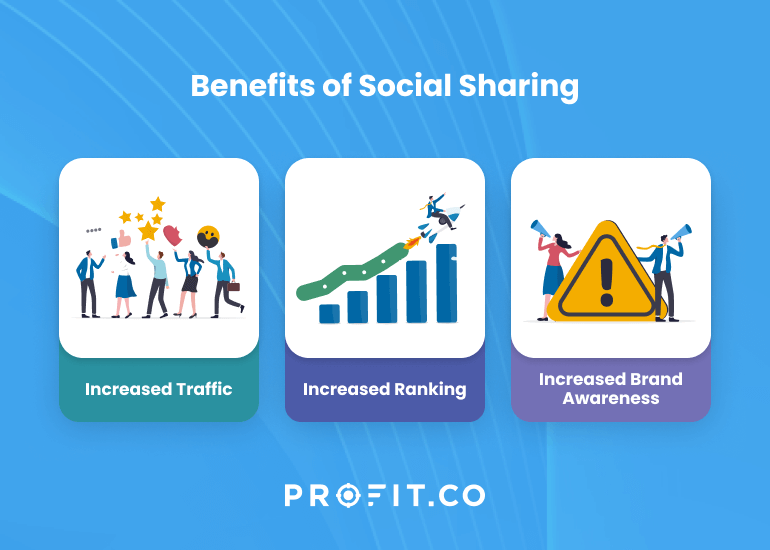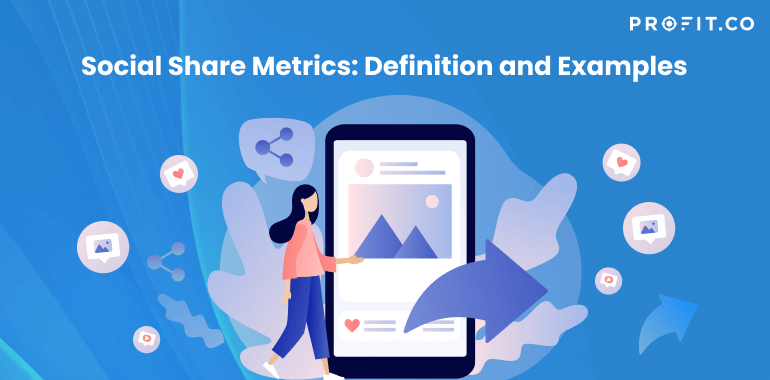Social media has evolved from mere buzzwords to essential aspects of our everyday lives. It provides marketers with the opportunity to reach diverse audiences by sharing content. One effective and genuine marketing approach involves encouraging consumers to share content or provide reviews on social media platforms. This strategy, known as social sharing, is employed by both social media marketers and content marketers, as it facilitates the natural dissemination of content among consumers.
To enhance your team’s understanding and strategy, it is crucial to familiarize yourself with social share metrics. These metrics enable you to track content sharing and evaluate its impact. By exploring the concept of social share metrics, you can elevate your team’s scope and refine your marketing strategy. Check out our blog to gain valuable insights on this topic.
If the metrics you are looking at aren’t useful in optimizing your strategy – stop looking at them.
What are Metrics?
KPIs and metrics are quantifiable values but refer to different things within a business. They overlap sometimes, so some people use them interchangeably. KPIs align with the business targets, while metrics focus on the activities and processes in the business that don’t necessarily connect to a business goal or indicate business health.
A metric refers to a quantifiable value that monitors progress and assesses success. Metrics monitor the performance and improvement of particular vital processes in the business.
To learn more about metrics to help your business
What is Social Sharing?
Social sharing is sharing content or other media via a platform. Content, such as articles, videos, images, and other media, is shared on social media platforms like Facebook, Twitter, Instagram, and LinkedIn. When social media users share your content, it achieves visibility with the user’s followers. Thus, the content spreads organically.
For example, suppose a user shares a compelling video with their colleagues and peers on LinkedIn. In that case, they are social sharing, which is sharing content on a social media platform or network. You can track social sharing along with other social media KPIs to evaluate your brand’s online presence.
Social sharing is an important aspect of social media marketing and can be a valuable tool for building brand awareness and increasing engagement with target audiences.
Measuring Social Shares
A social share(s) is when a singular social media user shares your content with their network on a platform. When a social media user shares your content, it achieves visibility with the user’s followers. The number of social shares is an example of a metric that companies use to track their engagement. Companies can use third parties or additional software to track and analyze the number of shares they receive. A streamlined tool would be a social media dashboard, which tracks social shares and many metrics regarding engagement and consumption.
Social Media Dashboards can track the following metrics:
- Followers
- Content Engagement
- Reach
- Impressions
- Likes
- Comments
- Shares
- Post Clicks
- Average Video Watch Time
- Retweets and Mentions
Measuring metrics can help your team learn who your audience is and what content they connect to. Tracking and measuring social sharing lets you stay updated on how they relate to your content and each other.

Benefits of Social Sharing
There are numerous benefits of social sharing, and utilizing user engagement metrics will allow you to evaluate and track your business’ performance.
Here are some of the benefits of social sharing:
1. Increased Traffic
In the age of virality, when a user shares content through their social media platform, it reaches all their followers. This presents a valuable opportunity for your team to leverage the power of social sharing. Utilizing website traffic sources will allow you to easily track engagement and traffic. By encouraging users to share your content, you can significantly expand its reach and accessibility.
2. Increased Ranking
When shares accelerate your content’s engagement, search engines will pay attention. Search engines will rank keywords higher in the algorithm with increased shares and other engagement metrics.
3. Increased Brand Awareness
If a user shares your brand content, their friend or colleague will be more likely to purchase your product due to the referral or endorsement. Even if no one uses your product or service, the sharing will expose them to your content and brand.
Examples of Social Sharing on Different Platforms
1. Facebook
An example of social sharing on Facebook is the sharing of a post. If a cruise line creates a post about a sweepstake for a free vacation to get traction for their company, they could make one of the rules of entry to share the post on Facebook. This parameter incentivizes customers to share the competition on Facebook while simultaneously serving as a low-cost marketing campaign for the company.
2. Twitter
An example of social sharing on Twitter is retweeting a tweet. Public Twitter accounts can allow followers to retweet and send their tweets to other users. Companies could ask followers for their favorite product on Twitter and have their users react to it by favoriting the tweet or retweeting it to gain traction. For example, a soda company could have their followers show their favorite kind of soda by retweeting their diet formula or favoriting the tweet for their classic recipe. Users will enhance the share metrics and participate in social sharing to vote for their favorite soda formula in a poll.
3. Instagram
An example of social sharing on Instagram is sharing content on stories. Public accounts allow users to share their posts via their stories or reposting. In 2020, Taylor Swift announced a surprise album via an Instagram post. Due to the Covid-19 pandemic, she skipped the usual marketing strategy of album releases that consist of late-night appearances, interviews, single releases, and performances. The post was shared on the stories of many of her 249 million followers, creating free traction for her album release. It was so successful that she followed a similar strategy for an additional album that she released as a surprise and thank you to her fans on her birthday.
4. LinkedIn
An example of social sharing on LinkedIn is sharing a post with your colleagues. Often, when companies are looking for a new hire, they will create a post on LinkedIn. The company’s employees can share this post on their timeline, allowing for increased job posting visibility and organic momentum. Similarly, people looking for work opportunities can create a post explaining their interests and availability. Members of their network can share this post and give it more visibility, leading to networking opportunities and new job leads.
FAQs
1. What are social shares?
Social Shares are when social media users share your content with their network on a platform. When a social media user shares your content, it achieves visibility with the user’s followers. Thus, the content spreads organically.
2. What is an example of social sharing?
For example, suppose a user shares a compelling video with their colleagues and peers on LinkedIn. In that case, they are social sharing, which is sharing content on a social media platform or network.
3. What are the benefits of social sharing?
Some benefits of social sharing are increased traffic, ranking, and brand awareness.
Conclusion
Social sharing is an essential part of modern-day social media strategy and engagement. It can be a valuable tool for your team to increase traffic, ranking, and brand awareness. Utilizing these metrics can allow your company to thrive and grow.

